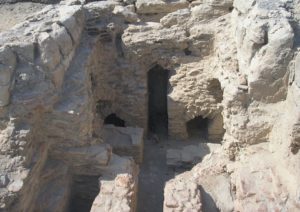
4th Period of Biblical History
Greco-Roman Period
536 BCE – 638 CE
Sponsored By: Louise Scholtus
Grawn, Michigan, USA
When Solomon died the United Kingdom was divided into two separate halves, neither of which had the strength to continue as an independent conquering nation. Both were consumed by animus toward one another and, therefore, became victims of external conquest.
The Egyptians were first to arrive, followed by Assyrians, Babylonians, Persians, and Greeks, each of which made an indelible mark on the landscape and the people.
In Tamar, the fortress that Solomon may have built, could have been destroyed when Pharaoh Sheshonq I (Shishak in the Bible) plundered several southern cities, stripping the First Temple of its sacred vessels and its gold. Otherwise, the Arava was hardly affected by these foreign occupations until Pompey and his legions marched in. Palestine then became part of the Greco-Roman world, subject to the enforced Hellenization already taking root in the Jewish homeland because of the arrival of Alexander.
Unlike Greece, Rome was always concerned with the procurement of taxes and trade to support an expanding empire. With that in mind Roman soldiers secured the spice routes through southern Israel and reestablished Tamar as a fortified city complex of longstanding duration. They protected the caravans and kept a tight hold on merchandise and money. Yet they could not control religion or the fanaticism of true believers.
Over time, as the empire weakened, and as its warriors were no longer Romans by blood, pagan polytheism was traded in for the monotheism of a new faith that grew out of the older Abrahamic roots of Judaism. It happened slowly, of course, even as Roman converts guarded Tamar and the nearby copper mines where Christians labored for the emperor.
 Ruins from the Greco-Roman Period.
Ruins from the Greco-Roman Period.
Next: Islamic Period
Seven Historic Periods of Israel
Abraham Period
2000 – 1350 BCE - learn more
Moses Period
1350 – 1000 BCE - learn more
Israelite Period
1000 – 586 BCE learn more
Greco-Roman Period
536 BCE – 638 CE - learn more
Islamic Period
638 – 1918 CE - learn more
British Period
1918 – 1948 CE - learn more
Israeli Period
1948 – to present - learn more
